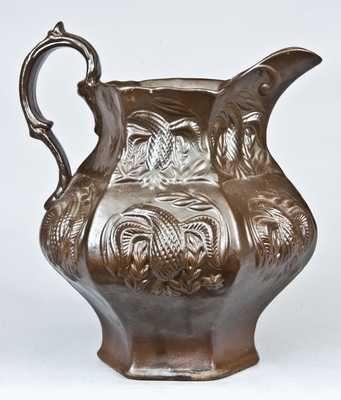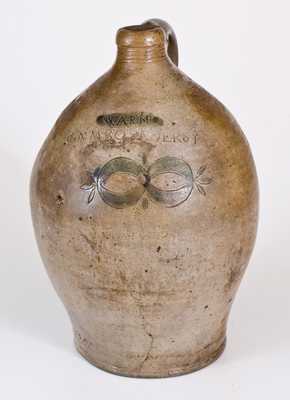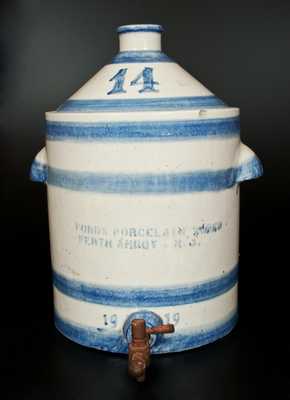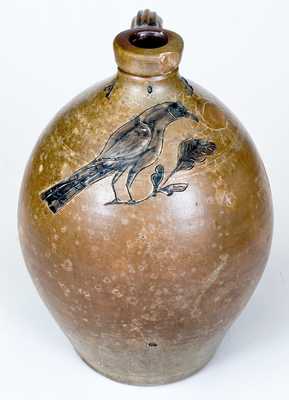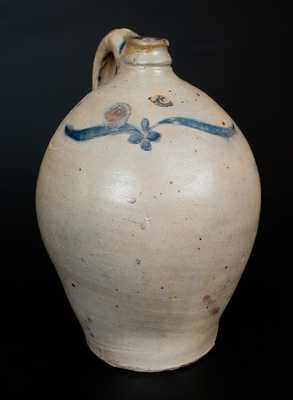Important and Unique Diminutive Stoneware Flask with Incised Ship and Cobalt Floral Decoration, New Jersey origin, possibly Captain James Morgan, Cheesequake, NJ, circa 1775-1784, ovoid form with heavily-tooled spout, decorated with an incised and cobalt-highlighted design of a sailing ship. An additional cobalt stripe at the mast forms the ship's flag or pennant. Reverse with slip-trailed floral decorations emanating from a foliate sprig. This historically-significant new discovery is appealing on a number of levels, exhibiting strong decoration, wonderful size and form, and a particularly early age, made sometime in the years before or after the American Revolution. Few incised examples of American-made stoneware from this time period have survived, and each new intact find is to be considered a noteworthy and informative object of colonial material culture. This jug is composed of the exceptionally-fine, light-gray clay found on pieces made by significant 18th century American stoneware producers, including Captain James Morgan and members of the Kemple and Mead families. The stylized floral design on the reverse is perhaps most reminiscent of intact pieces and sherds attributable to the Morgan Pottery in Cheesequake, NJ. The full-bodied flask form, essentially potted as a miniature jug without handle, is virtually unknown in American stoneware production. Provenance: A fresh-to-the-market example, recently found in Pennsylvania. Surviving in remarkable condition, particularly when considering its age of 215-plus years. Near-mint, as-made condition with a small, in-the-firing spout chip and a tiny, glazed-over base nick. H 4 1/4".






